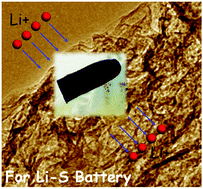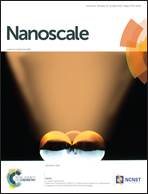3D dual-confined sulfur encapsulated in porous carbon nanosheets and wrapped with graphene aerogels as a cathode for advanced lithium sulfur batteries†
Abstract
Although lithium–sulfur (Li–S) batteries have attracted much attention due to their high theoretical specific energy and low cost, their practical applications have been severely hindered by poor cycle life, inadequate sulfur utilization, and the insulating nature of sulfur. Here, we report a rationally designed Li–S cathode with a dual-confined configuration formed by confining sulfur in 2D carbon nanosheets with an abundant porous structure followed by 3D graphene aerogel wrapping. The porous carbon nanosheets act as the sulfur host and suppress the diffusion of polysulfide, while the graphene conductive networks anchor the sulfur-adsorbed carbon nanosheets, providing pathways for rapid electron/ion transport and preventing polysulfide dissolution. As a result, the hybrid electrode exhibits superior electrochemical performance, including a large reversible capacity of 1328 mA h g−1 in the first cycle, excellent cycling stability (maintaining a reversible capacity of 647 mA h g−1 at 0.2 C after 300 cycles) with nearly 100% Coulombic efficiency, and a high rate capability of 512 mA h g−1 at 8 C for 30 cycles, which is among the best reported rate capabilities.


 Please wait while we load your content...
Please wait while we load your content...